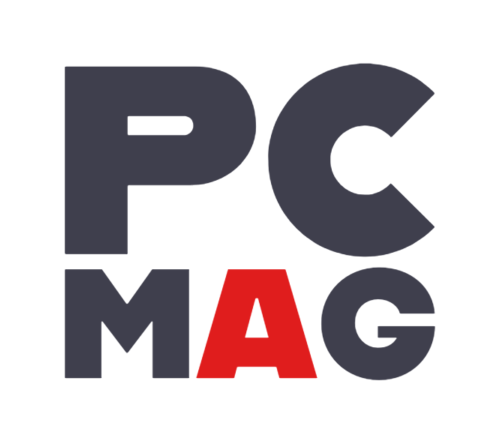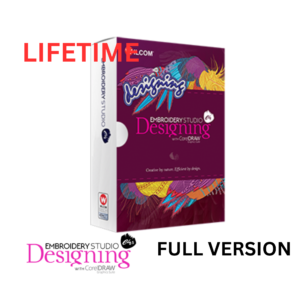In the world of digital printing, Direct-to-Film (DTF) technology is becoming increasingly popular for its versatility and high-quality results. One of the key components in a successful DTF printing workflow is the use of RIP (Raster Image Processor) software. DTF RIP software is essential for converting digital designs into printable files and managing the intricate details of the printing process. This extensive guide explores the significance of DTF RIP software, its features, benefits, and how to choose the best solution for your needs.
1. Understanding DTF Printing
1.1 What is Direct-to-Film (DTF) Printing?
Direct-to-Film (DTF) printing is a method where designs are printed onto a special film. This film is then coated with a heat-activated adhesive powder. After the powder is melted onto the substrate using a heat press, the design is transferred onto various materials such as textiles, ceramics, and metals. DTF printing is renowned for its vibrant colors, durability, and versatility.
1.2 The Role of RIP Software in DTF Printing
RIP (Raster Image Processor) software plays a crucial role in the DTF printing process. It converts digital designs into a format that can be interpreted by the printer. The software manages color profiles, print settings, and other essential parameters, ensuring that the final print matches the intended design.
2. Key Features of DTF RIP Software
2.1 Color Management
- Color Profiles: DTF RIP software allows you to create and use custom color profiles for different substrates and ink types. This ensures accurate color reproduction across various materials.
- ICC Profiles: Integrated ICC (International Color Consortium) profiles help in maintaining color consistency and accuracy.
2.2 Print Settings Management
- Resolution and Quality: Adjust print resolution and quality settings to achieve the desired level of detail and sharpness.
- Ink Density: Fine-tune ink density settings to prevent issues like bleeding or smudging and to ensure optimal color output.
2.3 Layout and Design Tools
- Variable Data Printing: Incorporate variable data such as names or numbers into your prints, which is useful for personalized items.
- Multi-Design Layouts: Arrange multiple designs on a single film to maximize efficiency and reduce material waste.
2.4 Workflow Optimization
- Job Queue Management: Manage and prioritize multiple print jobs to streamline workflow and minimize downtime.
- Automated Processes: Use automation features to handle repetitive tasks and improve overall efficiency.
2.5 File Format Compatibility
- Supported Formats: Ensure the RIP software supports a wide range of file formats, such as PSD, TIFF, and PNG, for seamless integration with design software.
- Import and Export: Easily import and export design files to and from the RIP software.
2.6 Print Preview and Simulation
- Preview Function: Use the preview function to check the layout and design before printing, allowing for adjustments and corrections.
- Simulation Tools: Simulate the final output on different substrates to visualize how the design will look after printing.
3. Benefits of Using DTF RIP Software
3.1 Enhanced Print Quality
DTF RIP software helps achieve superior print quality by managing color profiles, resolution, and ink density. This ensures that the final print closely matches the original design and meets high standards of detail and vibrancy.
3.2 Increased Efficiency
With features like job queue management and automated processes, DTF RIP software significantly enhances workflow efficiency. This reduces manual intervention and speeds up the printing process, allowing for more jobs to be completed in less time.
3.3 Customization and Flexibility
The ability to create custom color profiles, adjust print settings, and handle variable data printing provides a high degree of customization and flexibility. This is especially useful for producing personalized items and experimenting with different design options.
3.4 Cost Savings
By optimizing print settings and material usage, DTF RIP software can help reduce costs associated with wasted materials and inefficient processes. Multi-design layouts and automated features contribute to more economical use of resources.
4. Choosing the Right DTF RIP Software
4.1 Key Considerations
- Compatibility: Ensure the software is compatible with your DTF printer and design software. Check for support for various file formats and integration options.
- Features: Evaluate the features offered by different RIP software, including color management, print settings, and workflow optimization tools.
- Ease of Use: Look for user-friendly interfaces and comprehensive support resources. The software should be easy to navigate and set up.
- Support and Updates: Consider the level of customer support and regular updates provided by the software developer. Reliable support can help resolve issues and keep the software up-to-date with industry advancements.
- Cost: Compare pricing options and evaluate the software’s cost-effectiveness. Some software may offer subscription-based models or one-time purchases.
4.2 Popular DTF RIP Software Options
- Cadlink Digital Factory DTF Software
- Known for its advanced color management and workflow optimization features.
- Supports various file formats and offers robust print quality control.
- Wasatch SoftRIP
- Offers extensive color management tools and customizable print settings.
- Provides automation features to streamline the printing process.
- Onyx Graphics Thrive
- Provides comprehensive tools for color management and job management.
- Known for its intuitive interface and efficient workflow features.
- ErgoSoft Studio
- Features advanced color profiling and print quality settings.
- Suitable for both small and large-scale DTF printing operations.
- SAi Flexi
- Includes a range of design and layout tools for DTF printing.
- Offers support for multiple file formats and efficient job management.
5. Implementation and Best Practices
5.1 Setting Up Your DTF RIP Software
- Installation: Follow the installation instructions provided by the software developer. Ensure that your system meets the software’s requirements.
- Configuration: Configure the software to match your printer settings, including color profiles and print parameters.
- Calibration: Calibrate your printer and software to ensure accurate color reproduction and print quality.
5.2 Optimizing Print Settings
- Resolution: Adjust print resolution settings based on the desired level of detail and the type of substrate.
- Ink Density: Fine-tune ink density to achieve optimal color output and prevent issues like bleeding.
- Layout: Utilize multi-design layouts to maximize material usage and reduce waste.
5.3 Managing Workflows
- Job Queue: Use job queue management features to handle multiple print jobs efficiently. Prioritize jobs based on urgency and resource availability.
- Automation: Implement automation features to streamline repetitive tasks and improve overall efficiency.
5.4 Troubleshooting
- Print Quality Issues: Address issues such as color inconsistencies or print defects by checking printer settings, recalibrating, and ensuring proper maintenance.
- Software Errors: Resolve software errors by checking for updates, reinstalling the software, or contacting customer support for assistance.
6. Future Trends in DTF RIP Software
6.1 Advancements in Technology
The DTF printing industry is expected to see advancements in RIP software technology, including improvements in color management, automation, and integration with other design tools. Enhanced features and capabilities will continue to evolve, providing greater flexibility and efficiency for users.
6.2 Increased Adoption
As DTF printing becomes more mainstream, the adoption of advanced RIP software solutions is likely to increase. This will drive innovation and competition in the market, leading to the development of more sophisticated and user-friendly software options.
6.3 Integration with Other Technologies
Future developments may include greater integration with other digital technologies, such as augmented reality (AR) for design visualization and artificial intelligence (AI) for print optimization. These advancements will further enhance the capabilities of DTF RIP software.
7. Conclusion
DTF RIP software is an essential component of the Direct-to-Film printing process, providing the tools and features needed to achieve high-quality prints and streamline workflows. With its advanced color management, print settings optimization, and workflow automation capabilities, DTF RIP software plays a crucial role in the success of DTF printing operations.
When choosing the right DTF RIP software, consider factors such as compatibility, features, ease of use, support, and cost. By selecting a solution that meets your specific needs and implementing best practices for setup and optimization, you can maximize the benefits of DTF printing and achieve exceptional results.
As the industry continues to evolve, staying informed about the latest trends and advancements in DTF RIP software will help you stay competitive and make the most of the opportunities in the dynamic world of digital printing. Whether you are involved in textile printing, promotional products, or personalized gifts, DTF RIP software offers the tools and flexibility needed to produce high-quality, vibrant prints and drive success in your printing endeavors.



